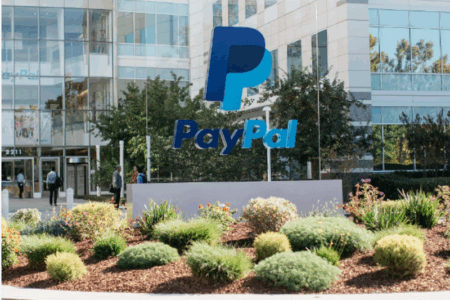The Straits Times Index (SGX: ^STI), or STI, pulled off an impressive performance last year.
Singapore’s bellwether blue-chip index logged a total return of 23.5% last year to beat out most of the regional indices.
Then, on February 10, the index broke through its all-time high of 3,906.16 set almost 18 years back in October 2007.
The index hit an intra-day record high of 3,921.30, marking a significant new milestone for the STI.
Investors are feeling ebullient on hearing this news but you may be wondering – what’s next for the index? Can it continue to attain new all-time highs?
Banks are leading the charge
The index’s superb run can be attributed to the stellar share price performance of Singapore’s three local banks, namely DBS Group (SGX: D05), United Overseas Bank (SGX: U11) or UOB, and OCBC Ltd (SGX: O39).
DBS set the tone for the banking sector by being the first to report its 2024 earnings.
Singapore’s largest bank chalked up a record net profit of S$11.3 billion last year as net interest income and non-interest income both logged year-on-year increases.
The lender also upped its ordinary dividend to S$0.60 from the previous S$0.54 and announced a new “capital return dividend” of S$0.15 per share per quarter to whittle down its excess capital.
Because of the good results and the announcement of sharply higher dividends, DBS saw its share price touch an intra-day record high of S$46.50.
Both UOB and OCBC also hit their respective record highs of S$38.06 and S$17.65.
UOB is set to report its 2024 earnings in the morning of 19 February while OCBC will release its full year report card on 26 February before trading commences.
Both banks are expected to report healthy results on the back of elevated interest rates and a surge in wealth management assets under management.
UOB and OCBC also have excess capital on their balance sheets which can be paid out either as higher ordinary dividends, or a special dividend.
Back in November 2024, UOB CEO Wee Ee Cheong said that the bank had S$2 billion to S$2.5 billion of excess capital which could be returned to shareholders via share buybacks or more dividends.
Over at OCBC, CEO Helen Wong has declined to disclose the bank’s excess capital but analysts estimate that it could range between S$3.6 billion to S$7 billion, thus allowing the bank to also dish out higher dividends to clear this excess.
With interest rates poised to stay “higher for longer” and the banks readying to pay out more dividends, investors could see all three banks hitting new highs as the year passes.
Collectively, the three banks make up 54.3% of the index’s weight.
Hence, any upward share price movement should see the STI breaking new records.
Higher dividends from Singtel and CICT
Let’s not forget that Singtel (SGX: Z74) takes up a 6.9% weight within the STI.
Singapore’s largest telco has seen its share price soar 45% in the past year, with shares hitting a 52-week high of S$3.41.
The good news is that Singtel’s underlying net profit has also been rising, albeit at slower rates compared to the banks.
For its first half of fiscal 2025 (1H FY2025), Singtel saw underlying net profit rise 6% year on year to S$1.2 billion.
A total interim dividend of S$0.07 was declared, inclusive of a value realisation dividend of S$0.014.
Investors should note that Singtel’s core interim dividend has increased for three consecutive years, from just S$0.045 in FY2022 to S$0.056 for FY2025.
With Singtel’s ST28 long-term plan driving operating profit improvements, there could be more good news to come from the telco.
For Singapore’s largest REIT CapitaLand Integrated Commercial Trust (SGX: C38U), or CICT, it occupies a 2.9% weight within the STI.
Its 2024 distribution per unit (DPU) inched up 1.2% year on year to S$0.1088 despite the presence of inflation and the higher cost of debt.
With its recent acquisition of a 50% stake in ION Orchard Mall to boost its downtown retail exposure, along with two asset enhancement initiatives (AEIs), investors should expect this trend of higher DPU to continue.
And as CICT reports better results, its share price should also do well in the medium term.
Other STI companies reporting good results
Apart from Singtel and CICT, other stocks within the STI’s top 10 list are also doing well.
Keppel Ltd (SGX: BN4) saw its net profit from continuing operations rise 5% year on year to S$1.1 billion for 2024.
The asset manager occupies a 2.66% weight within the STI.
CapitaLand Ascendas REIT (SGX: A17U) also delivered a good performance with its DPU for 2024 increasing by 0.3% year on year to S$0.15205.
Singapore’s oldest industrial REIT takes up a 2.55% weight within the STI.
Singapore Exchange Limited (SGX: S68), which occupies a 2.78% weight within the index, saw its net profit (excluding exceptional items) climb 27.3% year on year to S$320.1 million.
The bourse operator also upped its quarterly dividend from S$0.085 to S$0.09.
With these three companies reporting good results, their share prices could continue to rise and contribute to a higher level for the STI.
Get Smart: Full steam ahead
With the banking sector doing well along with a host of other blue-chip stocks reporting higher profits and dividends, investors can look forward to better days ahead.
It seems like a matter of time before the STI returns to its all-time high and has a high probability of making new records in 2025.
Looking to create a lifelong income stream? Check out our report, ‘7 Singapore Blue-Chip Stocks That Can Pay You for Life.’ We uncover a powerful lineup of dividend-paying stocks with the reliability and growth potential you need in today’s market. Don’t miss out on these dependable picks. Download your copy now and start building a secure financial future!
Follow us on Facebook and Telegram for the latest investing news and analyses!
Disclosure: Royston Yang owns shares of DBS Group and Singapore Exchange Limited.





